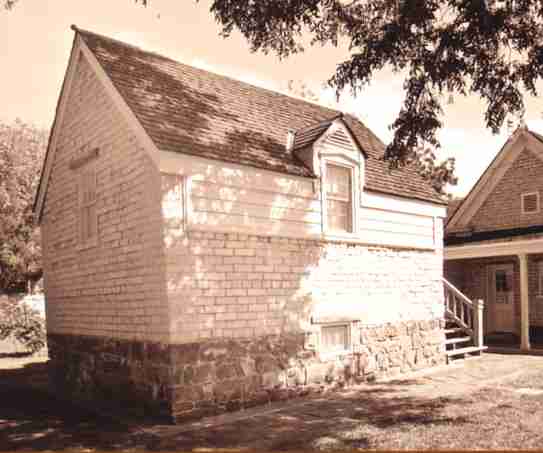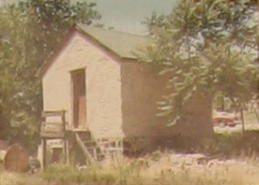
WASHINGTON COUNTY HISTORICAL SOCIETY (Washington County, Utah)
GRANARIES IN WASHINGTON COUNTY
about any of these granaries, please contact us with that information. We really want to capture this part
of our history before it is lost forever. Thanks!
HISTORY
Granaries have been used since ancient times to store grains and sometimes other commodities. Primitive granaries included pottery and stone lined boxes. Later versions included barns and silos.Granaries as they appeared in Dixie were unique as described below. They were often the first building on a lot and were occupied by the family while the main home was being built. When that main home was livable, the granary then became the storage building for the family.
As commercial enterprises became more prevalent, the task of warehousing food items was gradually offloaded to them. The granary buildings then were often turned into just tool storage sheds or even garages. Sometimes they were converted into supplementary living quarters.
As communities have been developed and modernized, many of the old granaries have been destroyed. The numbers of existing granaries in Washington County is rapidly diminishing.
DESCRIPTION
The Dixie granaries were typically small two story structures. The foundations were usually stone, often lava rock. The upper walls were usually adobe, but occasionally made of wood.The upper room (called the storeroom) housed sacks of grain, flour, and other dry goods in quantities sufficient for the family's needs. These stores were replenished after harvest time each year.
The granary's lower room (called the cold cellar) was used for storing fresh meat, milk, perishable vegetables, etc. It had thick masonry walls and/or was partially underground. The ceiling could be insulated with stacked grain sacks. Temperatures in the cold cellar could be maintained between 35°F and 45°F even during the summer by storing blocks of ice packed in sawdust and wrapped with burlap. During the summer, care was taken to make trips to the cold cellar only in the early morning hours when outdoor temperatures were moderate. The thick door would only remain open for a brief time and was kept tightly shut throughout the day.
EXAMPLES OF GRANARIES
Enterprise Silos, ??? E. Main St., EnterpriseEnterprise Ward Tithing Granary, Enterprise
Santa Clara Tithing Granary, 3105 Santa Clara Drive, Santa Clara
Jacob Gates Granary, 86 W. Diagonal, St. George
William F. Butler Granary, 190 South 300 West, St. George
189 South 200 West, St. George
274 South 200 West, St. George
74 North 100 West, St. George
290 South 100 West, St. George
410 South 100 West, St. George
Richard A. Morris Granary, 196 N. Main St., St. George
James G. Bleak Granary, 391 S. Main St., St. George
Orin N. Woodbury Granary, 84/86 South 100 East, St. George
149 South 200 East, St. George
221 South 200 East, St. George
446 South 700 East, St. George
333 West 400 North, St. George
281 West 300 North, St. George
610 East 100 North**, St. George
The Granary at Green Gate Village, 76 W. Tabernacle, St. George
Lee & Elsie Hafen Granary, 6 East 100 South, St. George
339 West 200 South, St. George
141-1/2 West 200 South, St. George
67 East 500 South, St. George
PHOTOS


REFERENCES
Brochure: "St. George Historic Granaries and Field Guide"For a higher resolution version of this brochure, click here
The Granary on the Saint George Town Lot
See Page 47 of A Little Piece of Zion: The Saint George Town Lot
Book by Richard R. Kohler, 2013
Wikipedia entry for Granaries